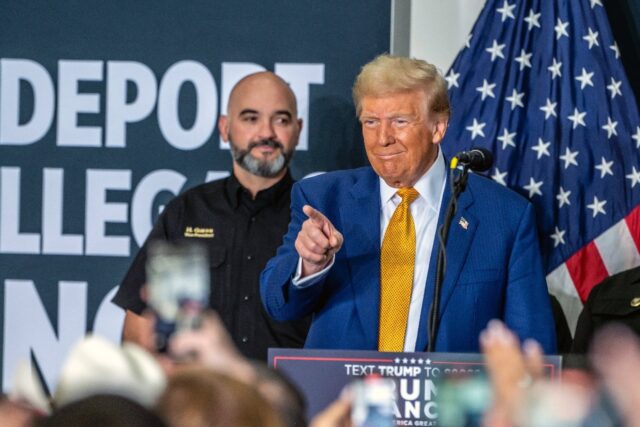Donald Trump has pledged to launch — on day one of his presidency — the largest deportation operation of undocumented immigrants in US history.
Carrying it out may be another matter.
“Rhetoric is one thing,” said Stephen Yale-Loehr, a professor of immigration law at Cornell University. “Actual implementation is something else.”
“The Constitution provides due process for everyone in the country, not just US citizens, so Trump cannot just round up people and send them out of the country the next day,” Yale-Loehr told AFP. “There already is a backlog of over 3.6 million cases in our immigration courts.”
Aside from the legal and humanitarian issues, a mass deportation of millions of people would entail enormous budgetary and economic costs and be a logistical nightmare.
Aaron Reichlin-Melnick, a senior fellow at the American Immigration Council (AIC), said there are currently an estimated 13 million to 15 million undocumented immigrants in the United States, and the reality of mass deportation is complicated.
“The president can significantly increase immigration enforcement, but the United States does not have the capability right now to round up and deport millions of people,” Reichlin-Melnick told AFP.
“It would require the hiring of tens of thousands of new law enforcement agents and staff and require the United States to build hundreds of new detention centers and hundreds of new courtrooms.”
Reichlin-Melnick said it was unclear that Congress would be willing to spend the amount of money it would cost to deport millions of people.
“It would require Congress to give the administration tens of billions, if not hundreds of billions, of dollars,” he said.
Economic impact
Mass deportation would also have a significant impact on the US economy, particularly on the construction, agriculture and hospitality sectors.
“Undocumented immigrants are a crucial part of the US economy,” Reichlin-Melnick said.
“If those people leave the workforce out of fear or because they’ve been deported it is going to cause a very significant labor shortage and cause inflation to rise and the cost of goods to rise as well,” he said.
A study by the AIC found that mass deportation would reduce US gross domestic product (GDP) by 4.2 to 6.8 percent and shrink federal, state and local tax revenues.
“During the Great Recession, US GDP dropped by 4.3 percent so mass deportations of the entire undocumented population would cause the US economy to crash,” Reichlin-Melnick said. “At the height of the Great Recession, 15 million Americans were out of work.”
He said the first thing he expected to see happen under Trump, who made anti-immigrant rhetoric a central theme of his campaign against Vice President Kamala Harris, would be restrictions on legal immigration.
“This was the Muslim ban, or travel ban, of his first term,” he said. “Along with the travel bans, we would likely see additional visa bans.”
Trump has also pledged to immediately end a humanitarian entry program that allowed citizens of Cuba, Haiti, Nicaragua and Venezuela to legally settle in the United States.
“And as we saw in his first term, his administration is very willing to kick hundreds of thousands of people out of legal status,” Reichlin-Melnick said.
Besides completing the wall along the US-Mexico border, the former Republican president has also proposed having American troops play a larger role in border enforcement.

COMMENTS
Please let us know if you're having issues with commenting.